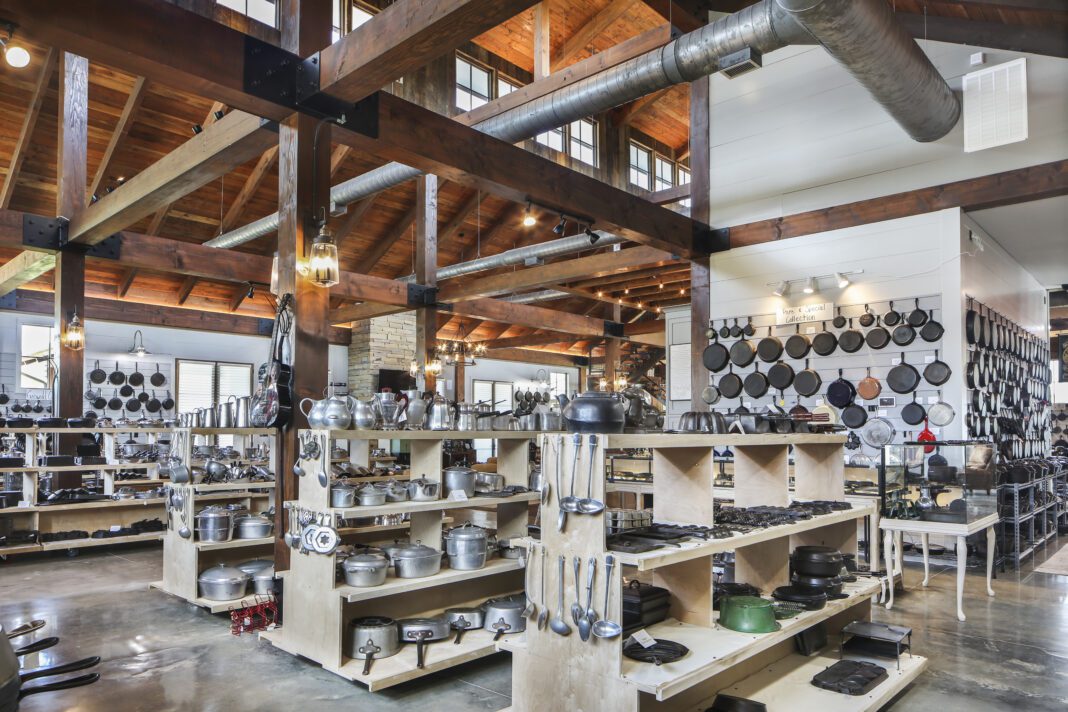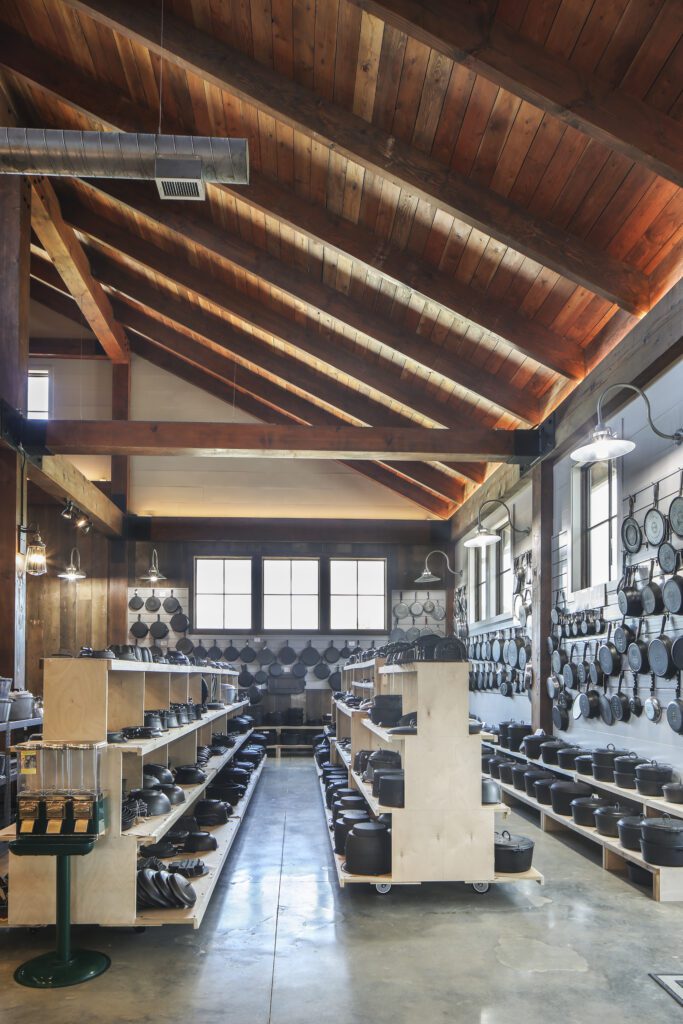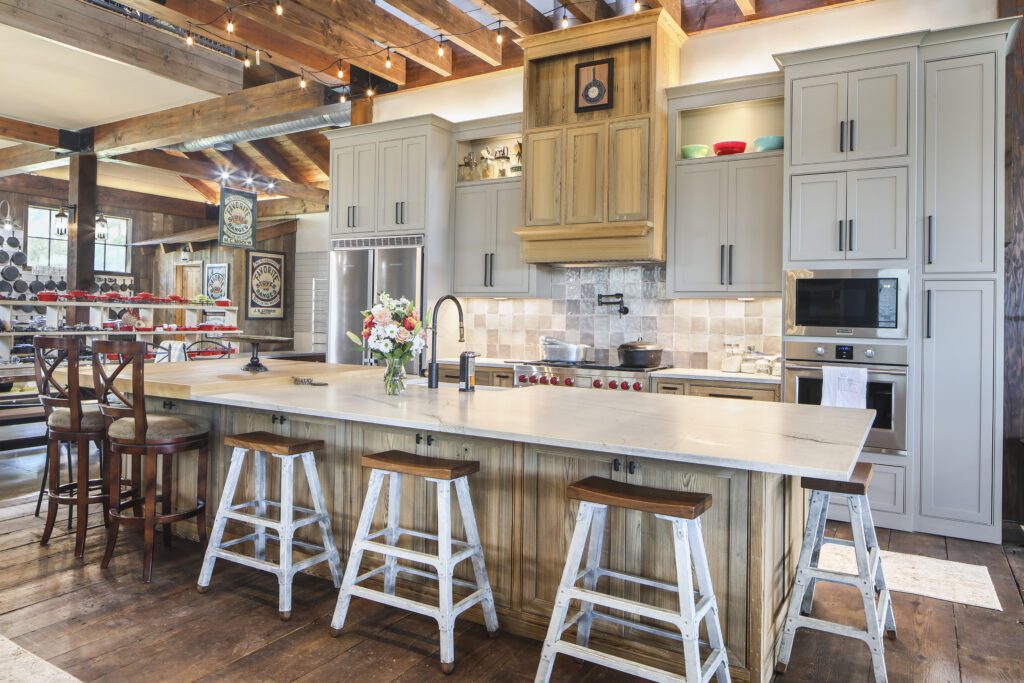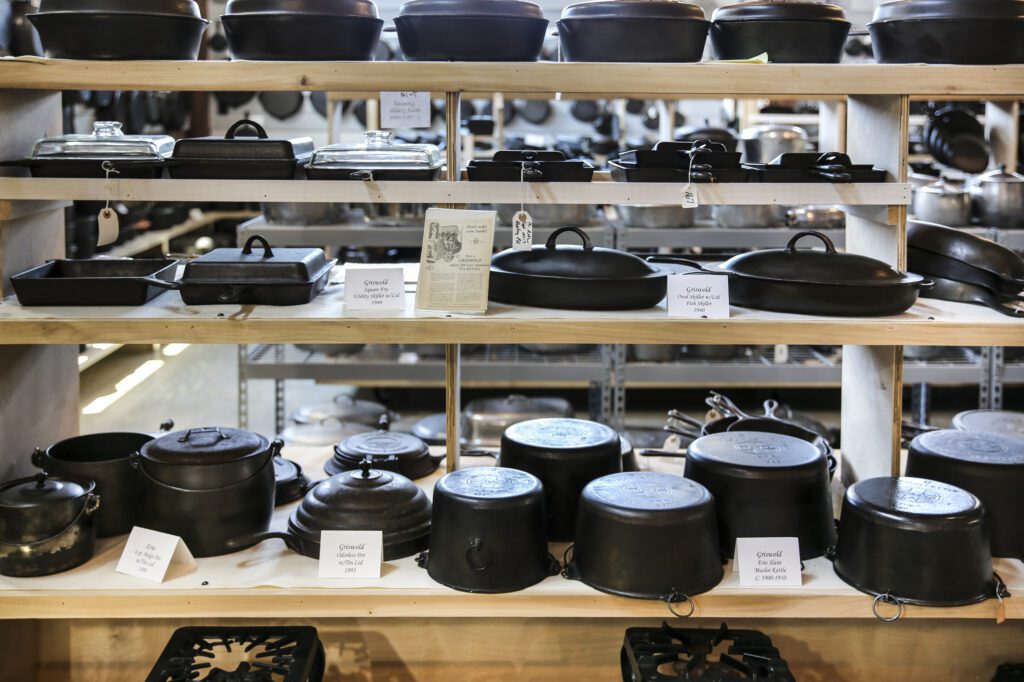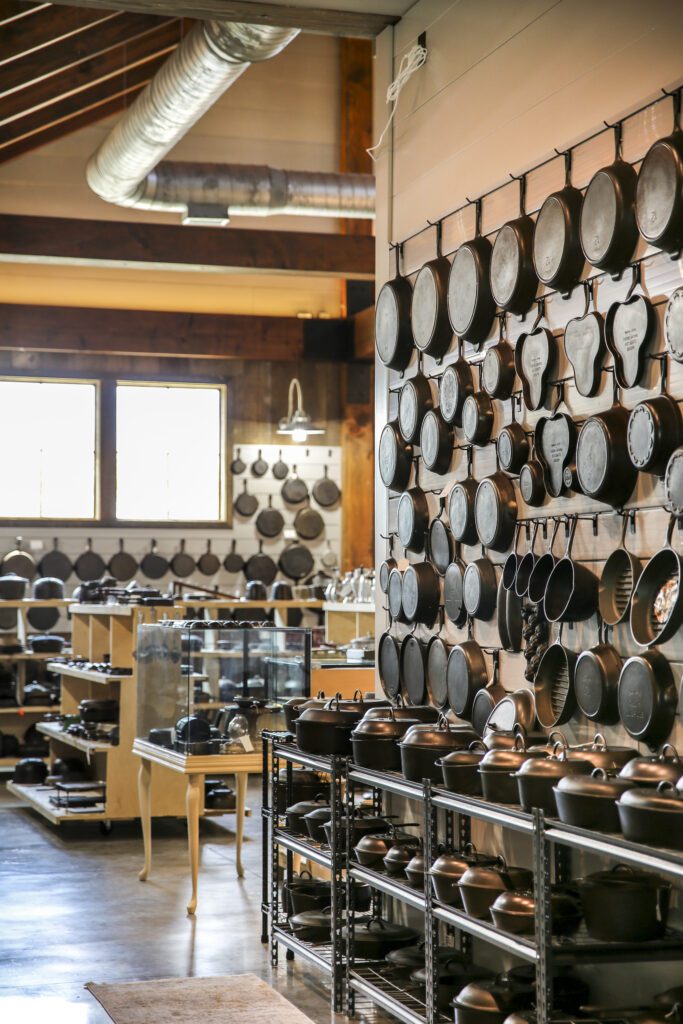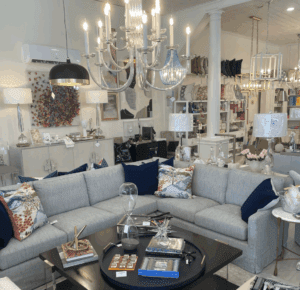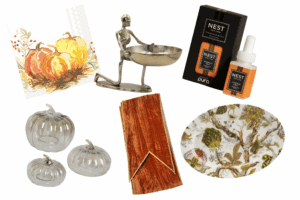The second-largest heirloom cast iron collection in America finds its home in Baton Rouge
Shaped long and thin like Frank Lloyd Wright would have done, the stone throughout the nearly 8,000-square-foot structure is a sandy-hued, quarry-cut Arkansas chestnut, and its high, steeple-like ceiling and accent walls bear the rich amber and sunny grain of Douglas fir timber. Inside, the vaulted two-story space is cool and dry. The modern barn-style home was designed by architect William Powell and built by Rick Vinyard, owner of Precision Construction Group and Greystohn Solutions. It sits on a manicured green-lawned plot inside Manchac Reserve in south Baton Rouge, but it looks like it should be in Wyoming.
And yet the most memorable thing about homeowner Clayton Mitchell’s new temple for a decades-long hobby just might be the immaculate gleam. At certain hours of the early morning and late afternoon, curious window light pours in, cascading off the curves of the enamel and dark ore sheen of the 8,000 pieces of rare, vintage cast iron cookware—some of it dating back to the 1800s—he has meticulously researched, hunted and purchased. Blink and it looks like diamonds hanging in the air.
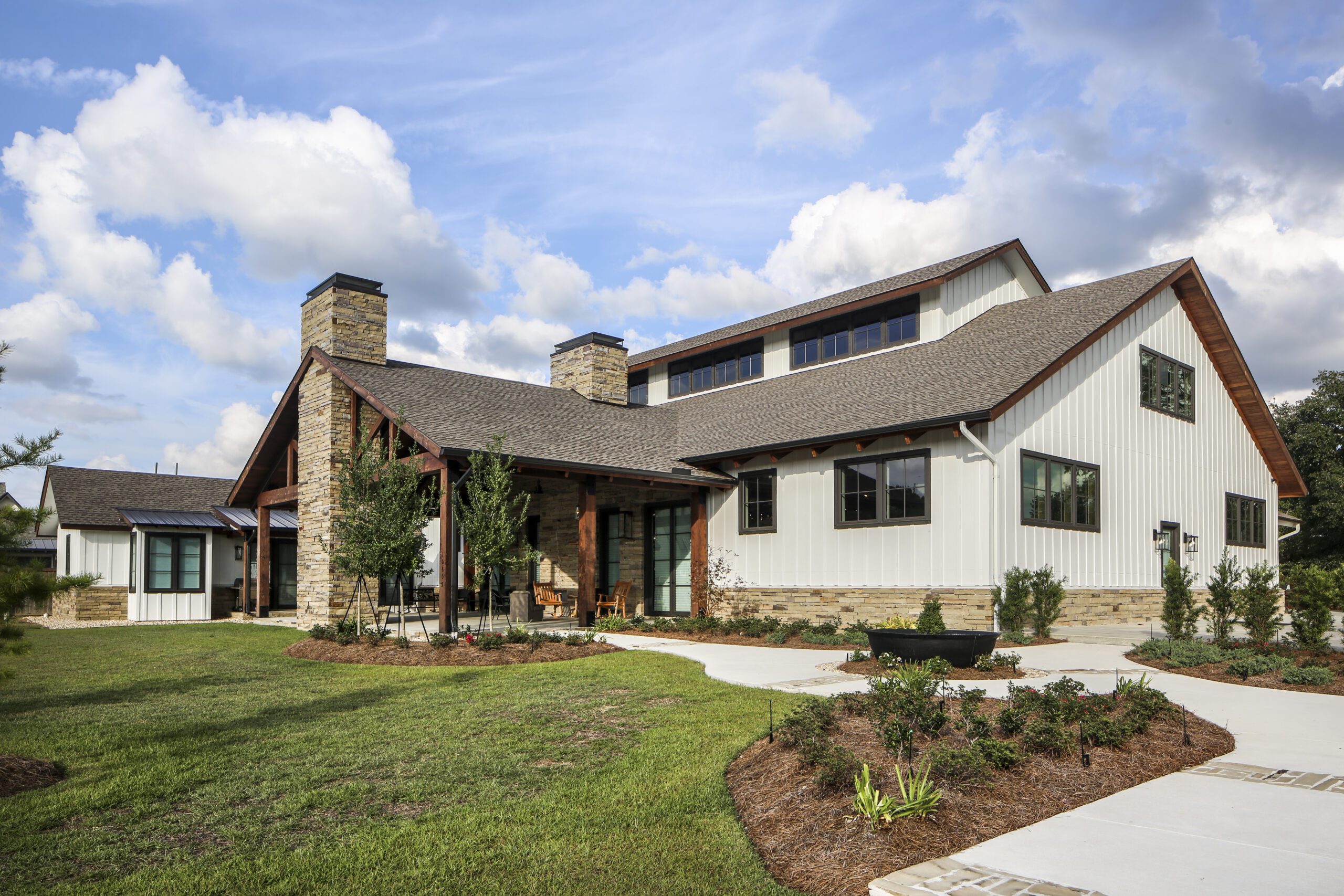
“We wanted this bling effect when you walk in that door,” says Eric McAllister, a retired carpenter and fellow cast iron collector who helped Mitchell organize his myriad displays and often travels with him to auctions and conventions. “The way the light hits it, it’s a priceless feeling.”
The friends first met at an auction outside of St. Louis, where Mitchell first mistook the easygoing Palmetto, Louisiana, native for a blunt Ivy Leaguer.
“I thought he went to Harvard because of what he was wearing, and he kind of snapped back, ‘Nah, I just liked the T-shirt,’” McAllister recalls. “So I thought he was kind of a wise guy for that, but then I saw how kind he really is, and how serious of a bidder he was.”
Whether it’s in the heat of a high-stakes auction, or a days-long road trip to the middle of Missouri or through the backroads of Appalachia, Mitchell is all about the chase.
“I would love to have everything, but I don’t want everything because that wouldn’t be fun anymore,” says the 65-year-old veteran homebuilder who has developed 17 neighborhoods in the area since the late 1980s. “There’d be nothing else to look for, and the hunt is what makes it exciting.”
Though Yellowstone spinoff 1883 featured a bastion of Mitchell’s and McAllister’s cast iron on the hit TV series, Mitchell hasn’t pushed to monetize his collection. He prefers sharing it all here in Baton Rouge at tailgate parties, or bringing a few pieces to large conventions so other fanatics can at least see them.
“The good Lord has blessed me to be able to keep these and have them on display,” says Mitchell. “If I just look at it all day, that’s no fun. The joy is when other people see it. It’s in the sharing it and talking about it—that’s the best.”
Mitchell’s pieces are not new. They are a more valuable vintage cast iron made in the USA before 1957. That’s the year when some processes began to be automated, the skillet sizes changed, recycled metal entered the picture in some cases, and the cookware often became heavier and thicker at the bottom with added features like side handles.
In the late 1990s when he picked up his first set at a market in Lafayette, Mitchell was in awe of the knowledge people had about the history of this iconic cookware. Now, he knows sellers in nearly every state, and the Hagen History Center in Erie, Pennsylvania—home of his favorite renowned cast iron manufacturer, Griswold—calls him for information or even a piece. More often than not, Mitchell has it.
Once cast iron gets hot, it stays hot, and just like those cooking qualities, Mitchell’s collection has grown exponentially in value. Many pieces are worth thousands, and that’s just for the skillets and Dutch ovens. Mitchell also has waffle-makers, coffee grinders and even a vintage cast iron book press. “The prices have skyrocketed because of hoarders like me,” Mitchell says with a grin.
Cooking with cast iron is ideal because, not only is it nonstick, it doesn’t leak toxins into food. The iron is the same as that found in beans or leafy greens. Just like his mother did while he was growing up, Mitchell loves a good batch of jambalaya fresh from a cast iron pot, especially when serving the guests who come from far and wide to view the collection.
“The way cornbread and gumbo tastes coming out of cast iron, man, that can’t be beat,” McAllister says.
While his expansive showroom is filled with shelves and rows of intricately categorized cookware, each set tagged with notes on where and when he bought it, Mitchell has also collected foundry materials, purchase order forms and personal letters from the Griswold family, all yellowed by the decades. He plans to compile these documents and write the lineage of cast iron cookware soon to distribute at conventions.
“My generation got caught up in selling fast online, and we didn’t study the history and keep the records like the previous generation of collectors, so I’m trying to do that, to help save the history of cast iron.”
Like his friendship with McAllister, Mitchell loves the newfound relationships born of this eclectic network of cast iron afficionados from all walks of life. Twenty-five years ago, Mitchell set about building a collection, and now in 2023 he has an entire community that makes his effort more than worthwhile.
“If collecting is just about the passion for the thing, it won’t last,” he says. “You have to connect with people. Those things hanging on the wall never talk. But each one has a story behind it, and it’s the people who tell it. So really, it’s all about the people.”




